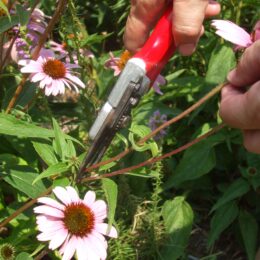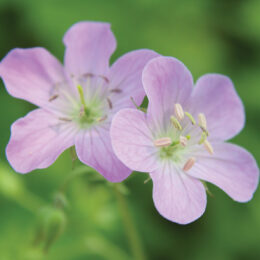
Gardeners are nothing if not hopeful. How many of us say “I’ll try that next year,” or “Next year will be better for fill in the blank.” Whether you want to add some new vegetables to your garden or plant a few spring-flowering bulbs, here are 10 things you can do now to make next year’s garden even better:
- Assess the past growing season. What were the successes and failures? Were there vegetables or annuals you’d like to grow again? Are there some that go in the never-again category?
- Do your fall cleanup. Clean up the vegetable gardens. Remove tomato, pepper and other food plants. Gardeners often avoid composting tomato plants because of their high susceptibility to disease. Many gardeners are used to cleaning up their perennial gardens in the fall. It’s always been considered good practice, especially when insects or diseases affected plants. It also reduces self-sowing. However, some gardeners are now choosing to leave certain plants upright, such as coneflowers, to provide food for finches and other birds that winter over. Hollow-stemmed perennials double as condos where native, solitary, leaf-cutter bees raise their young. Providing shelter and food for insects, birds and other wildlife supports a garden rich with pollinators and more flowers and food.
- Replenish the soil. Vegetables: Layer in compost, chopped leaves or rotted manure on top of the bed. Or plant a cover crop, also called green manure. Perennials: Add a 1-inch layer of compost, chopped leaves or rotted manure around the base of perennials.
- Mow and chop leaves. Leaves smother the lawn, so mow or rake them. You can mulch them to leave on the lawn as an organic fertilizer or collect and chop them to use as mulch in vegetable and flower beds.
- Start a compost pile. Chopped leaves and plant clippings can go right into a pile. As the plant debris breaks down, the resulting compost will be an excellent mulch or soil additive next spring.
- Divide perennials. This is the best way to get free plants for your garden — divide and transplant the perennials you like.
- Plant spring bulbs. What better way to welcome a new season of gardening than to plant spring-flowering bulbs? There’s always a spot or two to stick in a few daffodils, the most reliable spring bulbs to plant.
- Add a tree. If not now, when? It’s always a good time to plant a tree … for shade, for fruit or for flowers. Plants growing in nursery pots at the garden center can be planted any time the ground can be worked.
- Keep watering. Plants, especially trees, shrubs and evergreens, need to go into winter well-watered to prevent winter damage. Be sure to water newly planted trees and shrubs.
- Weed. Getting rid of weeds in the fall reduces how many unwanted plants will show up in spring and summer.
A popular speaker, Jo Ellen Meyers Sharp gardens in Indianapolis and blogs at Hoosiergardener.com.



